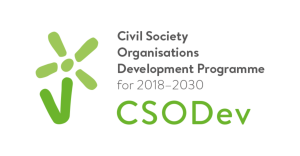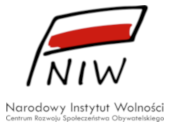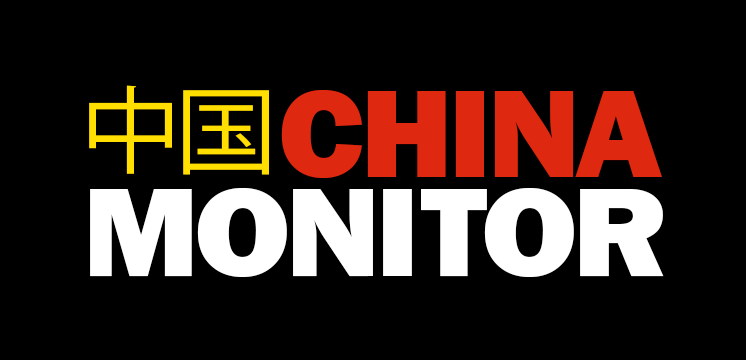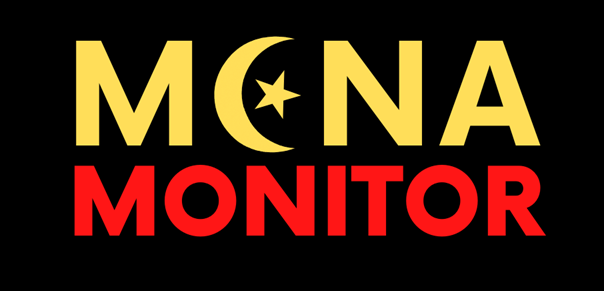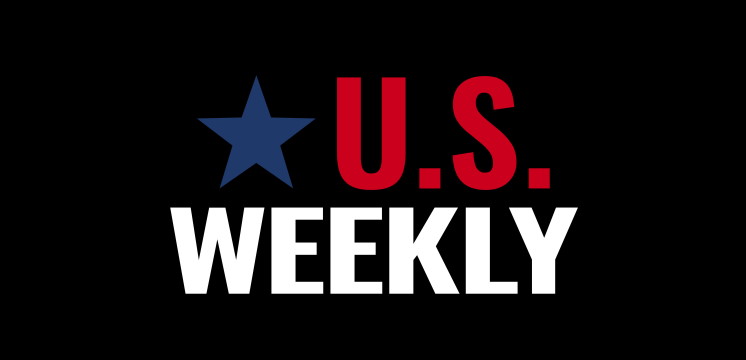SPECIAL REPORTS
Date: 19 November 2020
From the History of the Belarusian Revolution
On August 9, 2020, Belarus held a fraudulent presidential election, which was officially won by Alexander Lukashenko, who has been ruling the country since 1994. It could be said that it was a kind of a breakthrough moment, after which the Belarusian society has said “enough.” The Belarusian people decided to express their dissatisfaction by protesting on a scale which was unprecedented in the history of this country. Therefore, on August 24, 2020, i.e. after 15 days of protests, the Warsaw Institute launched a special program #BelarusAlert, which followed and described the situation in this country day by day. For the next 63 days we monitored current events, protests, reactions of the authorities and the international community up until October 27, 2020, the 78th day of the crisis and the failure to comply with the “ultimatum” issued by Sviatlana Tsikhanouskaya – Lukashenko’s opponent in the presidential election. Furthermore, we devoted numerous events and debates to the Belarusian cause, the most important of which was the “Round Table on Belarus” organized on September 30, 2020 along with leading Polish think tanks. This Report is the outcome and conclusion of our activities to date. In addition to all the texts in the #BelarusAlert series and the report on the aforementioned debate, it also presents our assessment of the protests, the circumstances that led to them, Belarusian democratic changes as well as the future of Alexander Lukashenko and the whole country.
EXECUTIVE SUMMARY
THE BELARUSIAN REVOLUTION:
THE BEGINNING AND THE END (?)
Grzegorz Kuczyński
Mass protests following the rigged presidential election turned out to be the largest opposition movement against the authorities in the history of independent Belarus. Although Alexander Lukashenko continues to hold the reins of government, he lost legitimization and the majority of Belarusians are against him. He is in power only thanks to the loyalty of the law enforcement as well as the political and economic support of Russia. The post-election protests mark the definitive end of this type of regime that Lukashenko had been building since the mid-1990s. This model based on tacit acceptance for his rule by the majority in exchange for a relatively low but stable standard of living and social security. Yet, it was the increasingly visible inefficiency of the economic model (the so-called Lukanomics) as well as the catalysts – the coronavirus pandemic and the government’s policy towards this problem that caused social discontent. In fact, the political crisis began even before the election.

The beginning of the election campaign coincided with the spring wave of coronavirus. Lukashenko absolutely ignored the pandemic. The policy of pretending that the virus does not exist did not mean that people did not contract it. As a result, the Belarusians, accustomed to the social model of the state, suddenly felt abandoned by their country. Therefore, mass protests took on a different approach than those following the previous election. The protesters of different political views, even those who were not interested in politics at all, were united by the vision of Lukashenko’s departure. Unfortunately for the president, this great discontent found its way out on the street – precisely because of the election campaign that had started. The first wake-up call for Lukashenko should have been the shockingly large attendance at the rallies of people intending to run in the election, where signatures were collected on candidate endorsement lists. However, the regime decided that it would be possible to neutralize this by using the methods that have worked in the past, i.e. not allowing some people to run at all and putting some people in jail on various charges. The latter affected three activists whom Lukashenko may have considered the most dangerous rivals: Viktar Babaryka, Valery Tsepkalo and Sergei Tikhanovsky. He saw all three of them, not without a reason, as potential candidates who certainly have good contacts in Moscow or could even be supported by it. It should be noted that another novelty of this year’s protests, besides their mass scale, was the positive attitude of the activists, and especially their leaders, towards Russia. Unlike in the previous years, the opposition did not have a national character, which was close to Belarusian nationalism, or a clear geopolitical orientation (closer to the West, further away from Russia). No wonder that almost until the end of the campaign Lukashenko opted for the alleged Russian threat, not the Western one. The most significant event was the detention of several dozen Russian mercenaries in a sanatorium near Minsk on July 29, 2020. Presumably they were travelling through Belarus to one of the countries where the Wagner Group operates and the Belarusian services knew about it very well. However, Lukashenko decided to use their presence and make accusations of preparations for the coup, indirectly indicating that Moscow was behind it. The president went all-in to force the Kremlin to determine the actual attitude towards the events in Belarus. A short-term crisis ended with a telephone conversation between Lukashenko and Putin, during which the Belarusian leader probably heard that he does not have to fear Russia. It turned out, however, that the elimination of Tikhanovsky and Babaryka was not enough, although Lukashenko ignored the candidacy of the blogger’s wife, Sviatlana Tsikhanouskaya. Meanwhile, more than 60,000 people attended her rally in Minsk on July 30. The turnout at the meetings of the opposition candidates must have deepened the concerns of the regime because even before the election Lukashenko reshuffled cabinet and the heads of some law enforcement agencies – clearly preparing for the possible large post-election protests.
Of course, the way the election was conducted allowed for the falsification of its results – votes could be cast from August 4 to August 8. On August 7, the Central Election Commission announced that the turnout had already exceeded 30 percent. The main election day was August 9. Five candidates run for the office, but from the very beginning it was clear that only two of them matter: Lukashenko and Tsikhanouskaya. Officially, Lukashenko received about 80 percent of the votes whilst Tsikhanouskaya about 10 percent (with 84 percent turnout). This meant that there was no need for the second round of the election. Of course, everyone expected the results to be rigged, but the scale of support that Lukashenko allegedly received was astonishingly large, it even looked like a provocation and only strengthened the protest. The regime was prepared for the demonstrations and in the first two days after the vote it tried to brutally suppress the protests. The scenario was supposed to be similar to the previous election when the authorities effectively pacified protests in the largest cities, mainly in Minsk. However, this time it did not work. The brutality of the militia mobilized people even more and after just a few days it turned out that the militia did not have the capability to disperse the crowds of thousands. What is more, the protests have proved to be widespread also in geographical terms. People took to the streets in small towns, not only in western Belarus, but likewise in the regions adjacent to Russia, up to now perceived by the regime as “safe.” It turned out that Lukashenko did not have enough forces to control the protests throughout the whole country, especially since many units had been brought to Minsk from other regions beforehand. At this point, the regime had to change its strategy – the militia discontinued attacking the protesters, law enforcement had to adopt a passive stance. What was worse for Lukashenko, Moscow remained silent. For several days in August the regime literally stood on the edge of the abyss. Two phone calls between Lukashenko and Putin (August 15-16) were crucial for the case. After them Russia declared its full support for the Belarusian regime, including the possibility of sending the forces of the Russian Ministry of Internal Affairs to Belarus. Apparently, the presidents reached an agreement. On the one hand, Lukashenko, alarmed by the scale of the protests, assured that he would make various concessions to Moscow, on the other hand, Putin was also concerned about the crisis in the neighboring country and feared that the situation might get out of control. He could not allow for the government to be changed by the protesters in an allied post-Soviet country –even if the new one will continue to be pro-Russian (as, for instance, two years ago in Armenia).
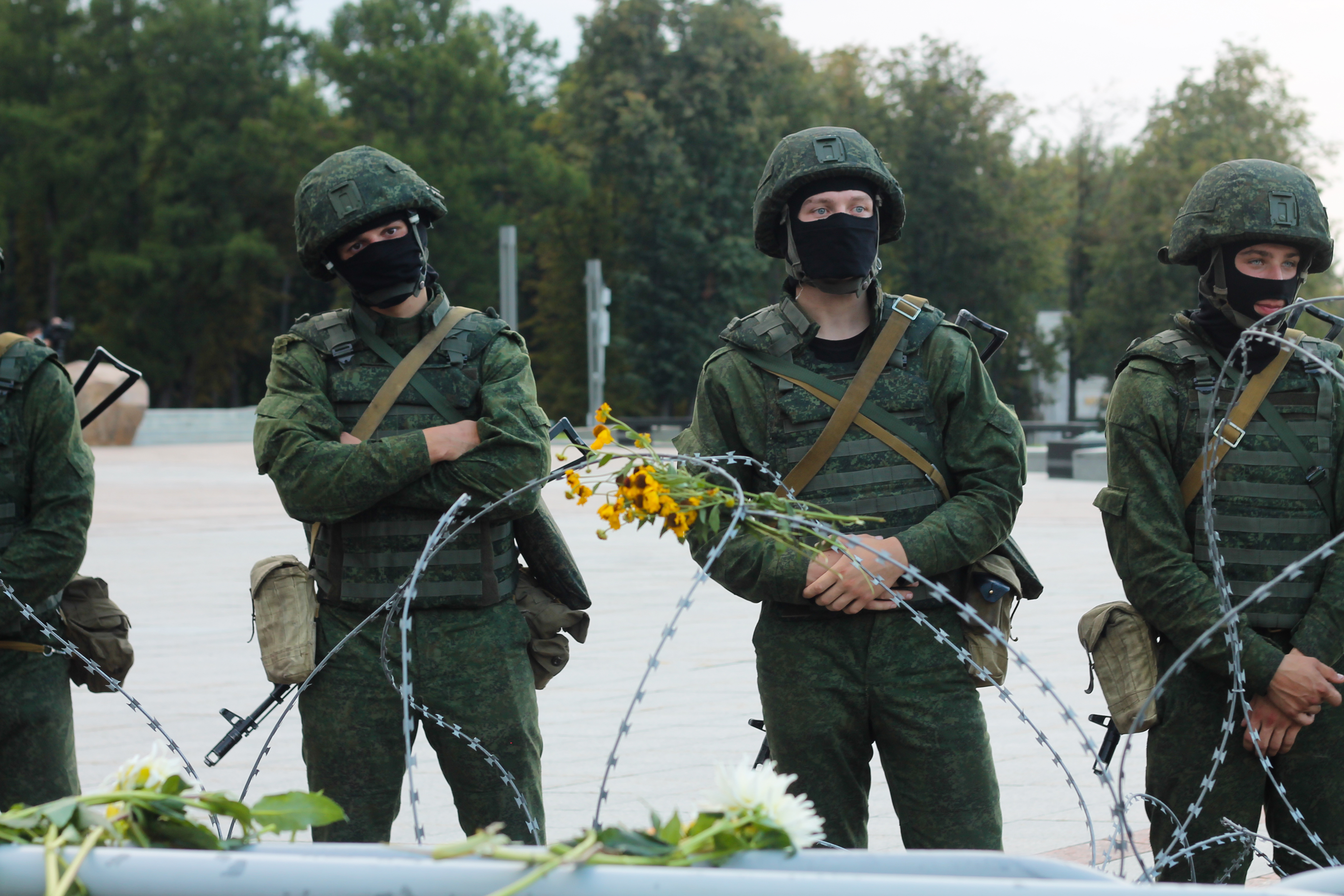
After the change of the strategy, Lukashenko finally managed to take control of the situation. In the first phase, the militia continued to avoid brutality and harsh repression of the protesters, until the scale of the demonstrations began to decrease. Only on Sundays the mobilization of the opponents of the regime was noticeable. At the same time, the authorities cracked down on the newly formed leadership of the protest movement. Tsikhanouskaya, as the first one, was forced to emigrate to Lithuania by the KGB. Later, the Coordination Council, a body established by various groups to represent Lukashenko’s opponents in talks with the regime, was targeted. Some members of the leadership were put under arrest, others, such as Pavel Latushko were forced to leave Belarus. The next stage involved the gradual intensification of repressions against street demonstrations, which undoubtedly contributed to the fact that the attendance on Sunday marches began to decrease significantly. It seems that the mistakes made by the opposition also contributed to Lukashenko’s victory, at least the tactical one and for a while. Emphasizing that the opposition movement against Lukashenko is not a pro-Western one, and that the protesters see Putin even as the protector against the repression of the regime did not help. The Kremlin still supports its brotherly authoritarian regime, but for the West (perhaps apart from Poland and Lithuania) it was a clear sign that it is not worth getting involved in this matter. Actually, Tsikhanouskaya herself gave an alibi to Berlin or Paris not to exert too much pressure on Lukashenko and confirmed that Belarus belongs to the Russian sphere of influence – which the so-called old EU member states have demonstrably respected (as evidenced by phone calls between Angela Merkel or Emmanuel Macron and Vladimir Putin regarding Belarus in the initial phase of the crisis). It seems that the second serious mistake was the unwillingness to radicalize actions – especially at the time when Lukashenko could really be overthrown – and then the much belated “ultimatum” that Tsikhanouskaya announced to the dictator. It ended with a spectacular defeat, which was foreseeable, because the general strike, which was supposed to be a response to Lukashenko’s failure to meet the demands of the opposition (including his resignation), was completely unrealistic at the end of October. The regime had already managed – after all, it had plenty of time – to stifle resistance in large industrial plants. In August, or in September at the latest, there was a chance for the general strike which could actually bring down the regime. But the strikes of that time were not properly coordinated and supported. Instead, Lukashenko knew perfectly well that the paralysis of the economy was more dangerous for him than recurring street protests of thousands of people.
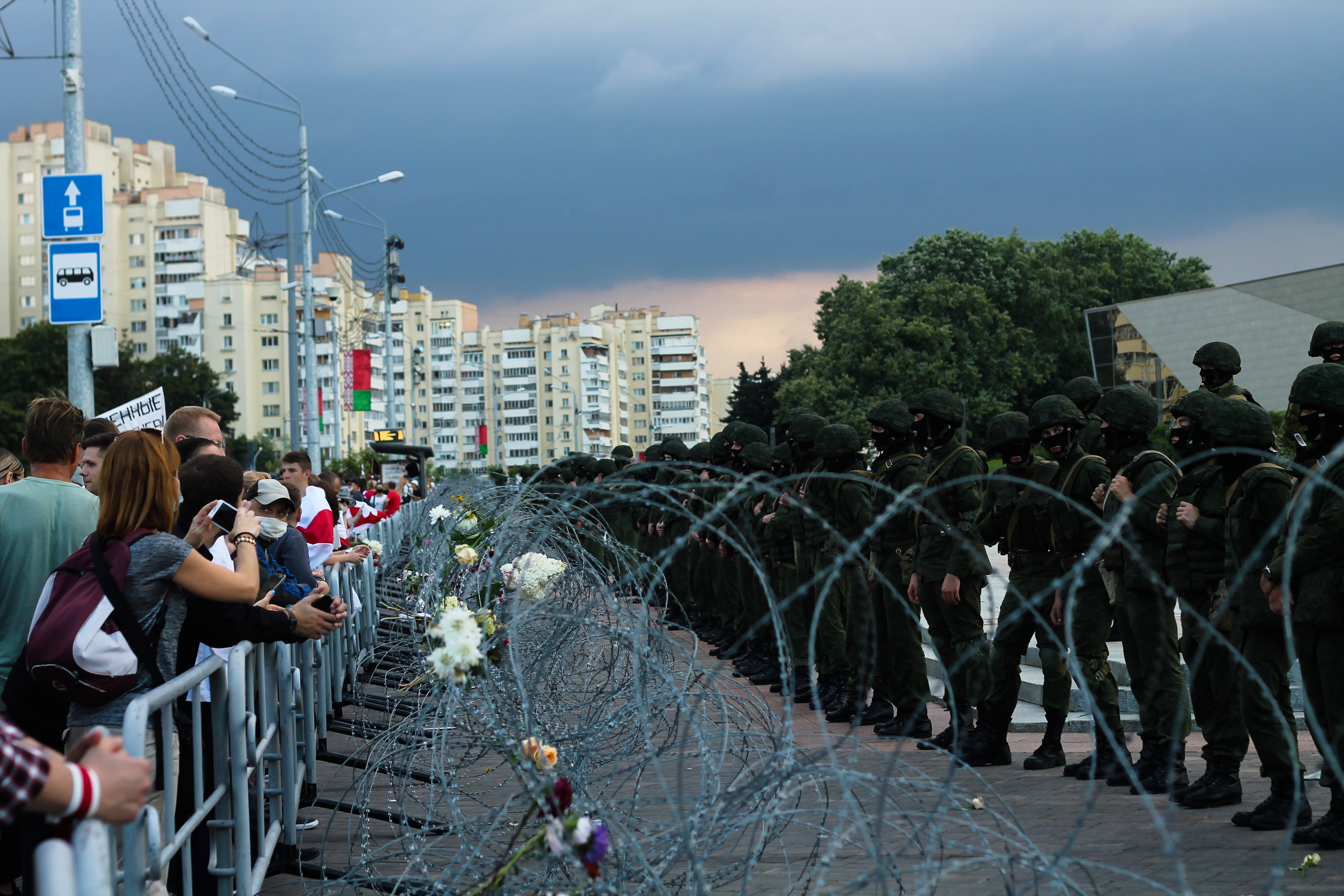
The fiasco of Tsikhanouskaya’s ultimatum can be considered a symbolic end to the wave of protests related to the fraudulent election. Of course, demonstrations will continue to take place. Various actions showing public opposition to Lukashenko, and, on the other hand, increasingly violent behavior of the militia, should be expected. Lukashenko will conduct a “dialogue” with the “constructive” part of the opposition, pointing to the “hooligans” paid for by the Western services. This was heralded by the dictator’s surprising visit to the KGB detention center, where he met with some of the imprisoned opposition activists. This is probably a preparation for a launch of a “constitutional reform,” which Russia expects from Lukashenko. However, the Belarusian leader will probably want to imitate the changes in this matter for as long as possible and delay the release of the activists whom he sees as potential “candidates of the Kremlin” for his office. One can expect Lukashenko to buy time and avoid Putin’s plan to bring about changes in Belarus in the future for as long as possible. Except, today Lukashenko’s position towards Moscow is incomparably weaker than before the current crisis.
Due to the close relations between Belarus and Russia, it is natural that the external factor has the greatest role in Belarusian events. Especially since other serious parties accept the fact that Belarus belongs to the Russian sphere of influence. The situation is different than it was, for instance, in the case of Ukraine in 2014. For this reason, mainly the neighboring countries are interested in how the state of affairs develops. Apart from Russia, which does not conceal the direct involvement on Lukashenko’s side, it is mainly Lithuania and Poland, but also Ukraine. What about the others? For example, Germany or the USA? As far as Berlin is concerned, the attempt to poison Alexei Navalny caused more outrage there than the rigged election and repressions (in addition to the arrests and tortures of hundreds of people there were also several fatalities). In fact, Merkel made it clear from the very beginning that she considers Belarus to be an exclusive zone of Russian influence. As for the US, the lack of its involvement was probably more due to the election campaign in America and the sense of failure of the “thaw” policy of American diplomacy towards Lukashenko in the last two years (e.g. Mike Pompeo’s visit). In terms of the West as a whole, the EU’s response has been very weak and announced too late. Initially, only personal sanctions were imposed on a group of Belarusian officials directly responsible for forgeries and repressions. In this case there was a problem with making a decision too – it was blocked by Cyprus. After the second round of sanctions, Lukashenko was also included on the blacklist, published in early November.
It is natural that the Russian policy was, is and will be the most influential on the situation in Belarus. Only thanks to the Kremlin Lukashenko survived the worst crisis. Moscow’s policy towards its neighbor is guided by several significant factors. One of them is, of course, a kind of solidarity with the authoritarian leaders (even if Putin and Lukashenko do not like each other personally), but the key is… geography. Belarus is a buffer zone separating Russia from the eastern flank of NATO, thus distancing the potential threat from Moscow. Belarus is a vital ally of Russia in the west. It is a loyal member of Moscow-dominated post-Soviet military, political and economic structures such as the Union State of Russia and Belarus, the Collective Security Treaty Organization (OUBZ), the Eurasian Economic Community and the Commonwealth of Independent States. In military terms, Belarus is in fact a part of the strategic space of Russia.Maintaining Belarus is crucial for Moscow because of the Kaliningrad region. If authorities in Minsk were replaced by the other ones seeking integration with the West or even advocating a neutral status, it would significantly deepen the isolation of the westernmost region of the Russian Federation. Moreover, it would complicate Moscow’s war plans, by not being able to threaten NATO with occupation of the “Suwałki Gap.” However, it would strengthen the security of the Baltic states and this is certainly one of the reasons behind Lithuania’s anti-Lukashenko policy and support for the opposition. Perhaps, the Russian plan for Belarus envisaged that Lukashenko would win the election, but he would be weakened by the good result of the opposition and therefore more likely to make concessions. The scale of the protests surprised both the Kremlin and Lukashenko. It was not until August 27 that Russia declared its support for the regime, including the use of force. After a series of telephone conversations, a meeting between Putin and Lukashenko took place in Sochi on September 14. It was the first one since the Belarusian election. Then, the key arrangements for further cooperation were made.
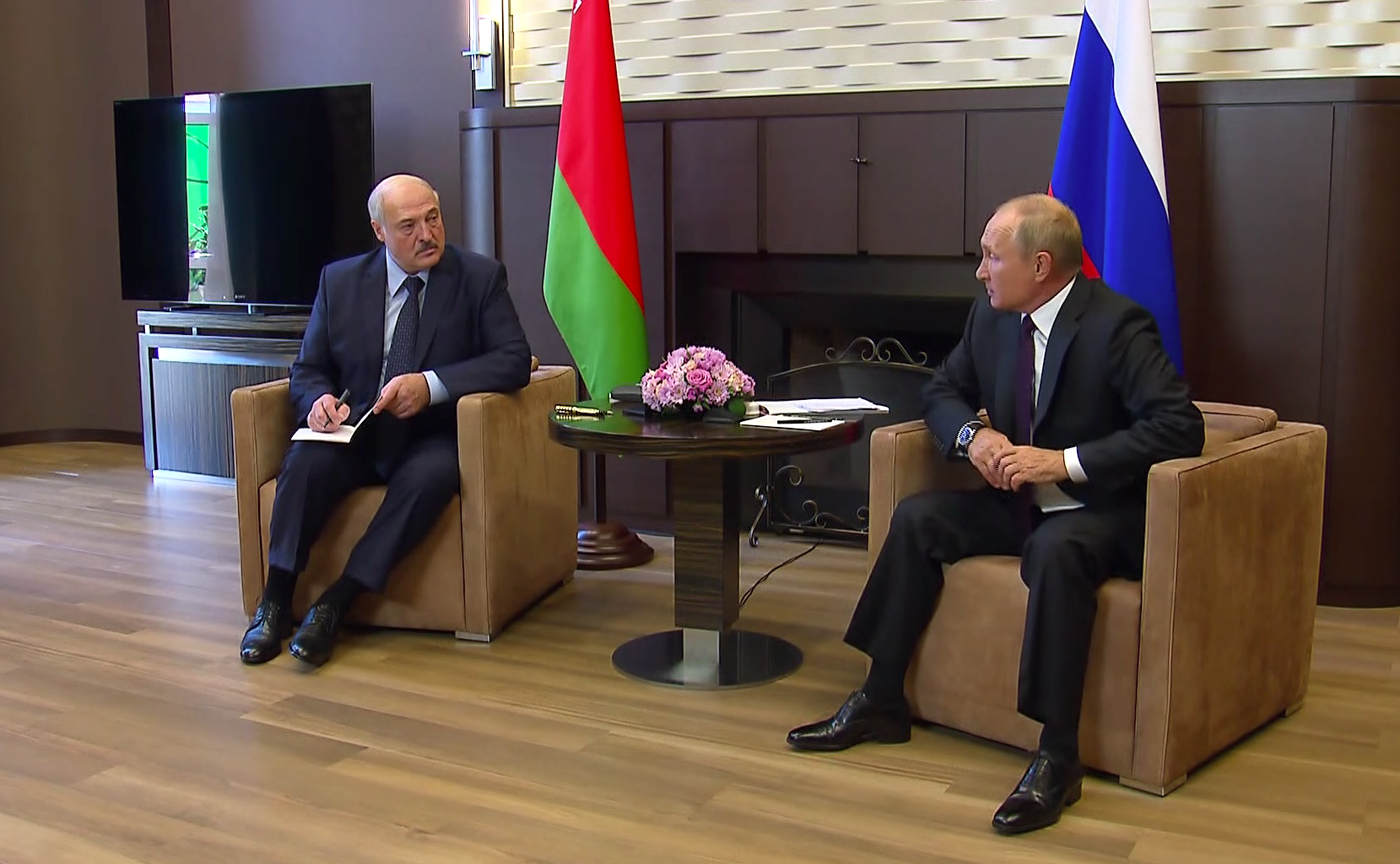
This is what Lithuania and Poland fear the most. From the point of view of Vilnius and Warsaw, the main criterion for assessing the events in Belarus is to strengthen or weaken Russian influence there. The current situation indicates the latter. Therefore, Poland and Lithuania are also very active on their own, lobbying on the EU forum for help to the opposition and for sanctions against the regime. These two countries have become a shelter for the opposition leaders. Historical sentiments connecting Lithuania, Poland and Belarus (but also Ukraine to a certain extent) should be kept in mind, but calculations regarding military security are crucial. The slow absorption of Belarus by Russia and even the mere increase of Moscow’s military presence on Belarusian territory must influence NATO’s military plans. However, the potential existence of large Russian forces in Belarus would aggravate Ukraine’s strategic position the most, significantly prolonging the potential conflict with Russia. Kiev sees the Belarusian crisis as a threat which might increase Russian influence in this country, and thus constitute a bigger threat to the Ukrainian state. So far, Ukraine has managed to maintain good relations with Lukashenko, who decided to play the role of a mediator between Kiev and Moscow. However, the current crisis in Belarus has worsened relations between the Belarusian regime and Ukraine. Although Kiev initially tried not to involve in the events of its neighbor in the north, this quickly changed when Lukashenko did not release the previously detained members of the Wagner Group wanted by Ukraine for participating in the fights in Donbass and then began to criticize the authorities in Kiev. As a result, Ukraine de facto joined the EU states in refusing to recognize Lukashenko’s legitimacy. However, after the events in Ukraine, Germany or France do not want to have another “eastern” problem. Hence, since the beginning of the crisis, consultations with Putin were taking place in order to obtain an assurance that there will be no bloodshed nor Russian invasion of Belarus. It seems that this is the only matter that most of the Western leaders care about. Although with time they also began to understand that there is no going back to the times when situation in Belarus was so peaceful that in many places in Europe it was forgotten that the Lukashenko’s regime still exists.
Nothing in Belarus will be the same as it was six months ago. The current wave of protests, although suppressed by Lukashenko, is the beginning of the end of this regime. The only question is how long will the regime last. Lukashenko has definitively lost the support of the majority of Belarusian society and can only rule using force. Russia is well aware of this. The Kremlin has to make a difficult choice. Overthrowing an autocratic ally would be a bad example for others and a proof of the ineffectiveness of Russian policy in its immediate vicinity. On the other hand, maintaining support for Lukashenko means increased political and economic costs for Russia. The position of Moscow will certainly have the greatest impact on how long Alexander Lukashenko will continue to govern Belarus. He will probably rule as long as Moscow does not have a replacement for him. This, in turn, opens up a chance for Poland or Lithuania to look for more or less overt allies in the Belarusian opposition, but also among the current top party officials. This will be useful when relations with the new authorities in Belarus will have to be established.
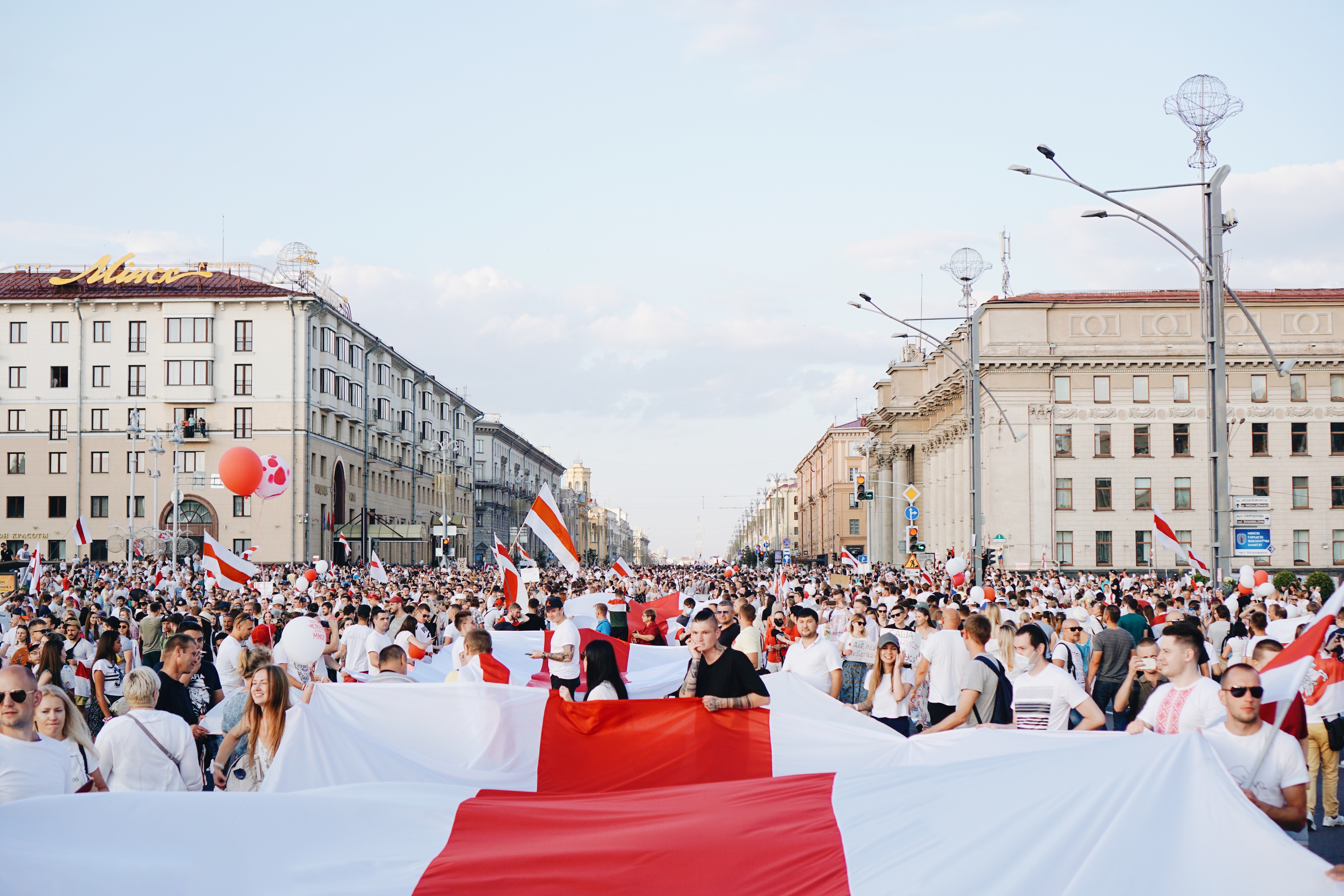
ROUND TABLE ON BELARUS:
REPORT ON THE DEBATE
Warsaw, September 30, 2020
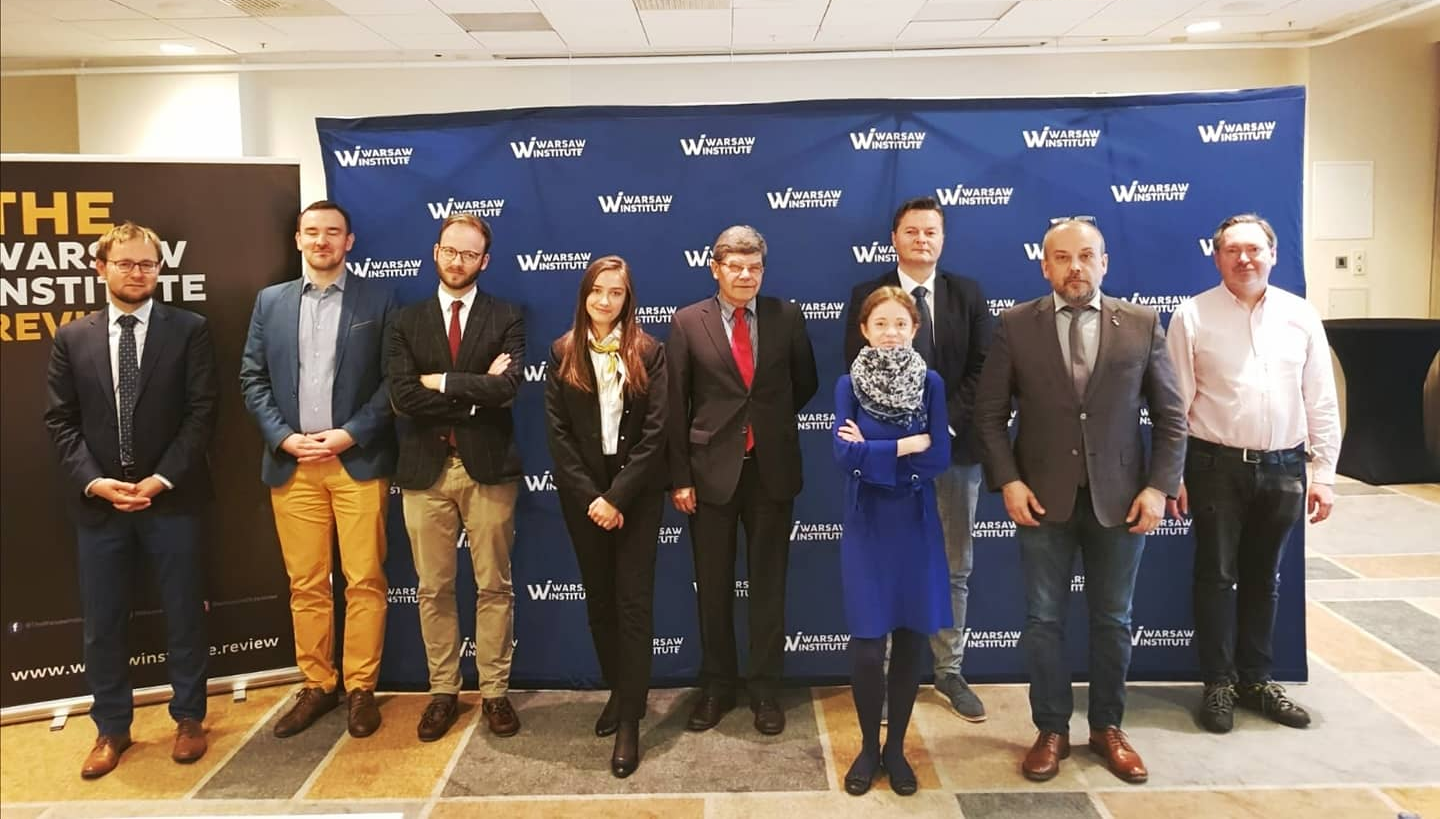
Observing the course of events in Belarus, the Warsaw Institute Foundation organized a “Round Table on Belarus” on September 30, 2020. Representatives of leading Polish think tanks and analytical centers met to discuss key issues for Poland and Central and Eastern Europe in the light of the events on NATO’s eastern flank as well as to analyze the possible influence of international organizations on supporting pro-democracy movements. The participants of the debate included:
- Janusz Tomaszewski, Representative of the National Security Bureau;
- Jerzy Marek Nowakowski, former Ambassador of the Republic of Poland to Latvia and Armenia, affiliated with the Institute for Eastern Studies;
- Jan Strzelecki, Analyst at the Polish Economic Institute;
- Marek Wróbel, President of the Republican Foundation;
- Anna Dyner, Analyst at the Polish Institute of International Affairs;
- Wojciech Konończuk, Deputy Director of the Centre for Eastern Studies;
- Paweł Musiałek, Director of the Center for Analysis of the Jagiellonian Club;
- Tomasz Grosse, Expert of the Warsaw Institute, lecturer at the University of Warsaw;
- Grzegorz Kuczyński, Director of Eurasia Program at the Warsaw Institute.
The experts discussed the issues of Poland’s and the region’s military security faced with the growing presence of Russian troops in Belarus, the capabilities of Poland to support Belarusian democratic movements as well as the strengths and weaknesses of international organizations in the face of the dynamic situation in Eastern Europe.
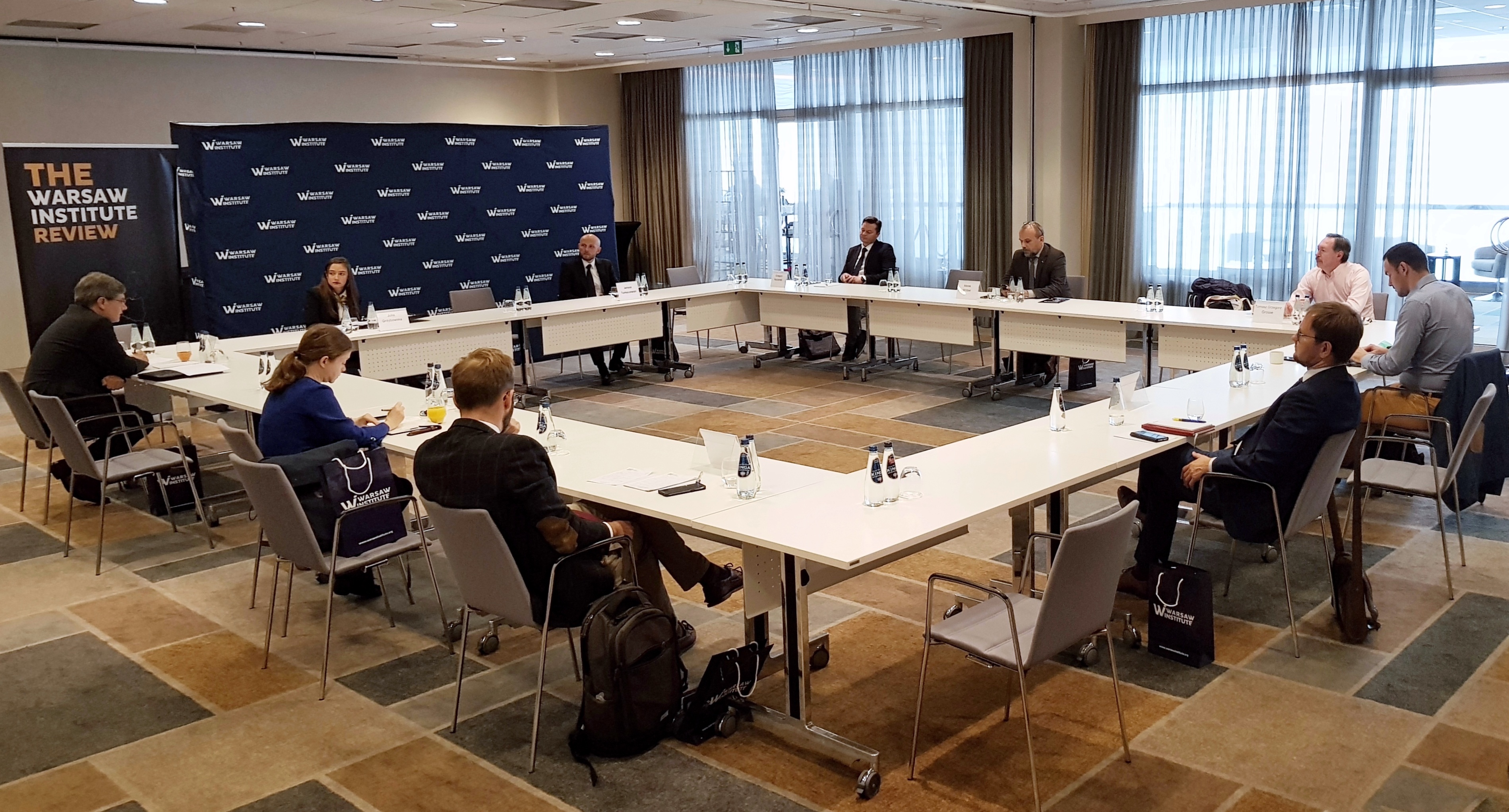
The first part of the debate entitled “The Belarusian matter and the military security of Poland and the region”comprised the following issues:
- Response of Polish Armed Forces as well as the armies of the Visegrad Group and NATO to the increasingly aggressive rhetoric of Alexander Lukashenko;
- Relocation of Belarusian troops to the border with Poland;
- Joint military exercises with Russia;
- Possibility of military intervention by Vladimir Putin.
At the end of the first part of the meeting, the experts recommended that Poland and the European Union support the United States in its clear opposition to the permanent bases of the Russian army in Belarus. However, this should be done while maintaining diplomatic balance in order not to give the Russians an excuse to repeat the Crimean scenario. Moreover, experts warned about using economic sanctions against Lukashenko’s regime, because sanctions imposed on Belarus would in a way be a burden also for Russia, which would have to increase subsidies for Minsk as a consequence; this could be treated as an unnecessary provocation by Vladimir Putin. Furthermore, it was agreed that greater involvement of Russia in Belarusian policy inevitably means its increased military activity in the region. Poland should therefore prepare itself for military provocations at the border in addition to cyber and hybrid threats. However, Poland should not demonstrably seek to take advantage of the current situation to expand NATO’s military capabilities or infrastructure on its territory, as Lukashenko and Putin would use this to strengthen Russia’s military presence in Belarus.
The second part of discussion – “Supporting Belarus in the face of democratic changes” – focused on the following subjects:
- Methods of supporting democratic movements and stimulating the Belarusian economy;
- Integration of Minsk with the West;
- Inefficiency of key international institutions in the face of growing disputes in Belarus;
- Conflict of interest among EU member states;
- International mechanisms of exerting pressure.
The experts recommended drafting a new Marshall Plan addressing the economic issues of Belarus and the implementation of a governmental support program for Polish companies operating in this country to contribute to the momentum of the local economy. In order to increase the entrepreneurial activity of Poles in Belarus, the government should take part of the risk within the framework of e.g. a subsidy. Furthermore, the participants of the debate have positively evaluated Poland’s activities to date, such as opening the borders or inviting students. However, regional cooperation should be further extended and include practices that were already functioning in the past, such as learning contemporary media cultures. Additionally, it should be emphasized how Belarus can benefit from a closer cooperation with the West, especially in political and economic terms. Closer relations among the intellectual and academic environments are also advisable – it was suggested that the first step should be supporting Tsikhanouskaya’s movement in drawing up a plan for democratic transformation. Additionally, the experts proposed the participation of Belarus in formats such as the Visegrad Group, the Three Seas Initiative, the Lublin Triangle or the Eastern Partnership, aiming at greater integration with the international community, emphasizing the observer status.
To sum up, the participants of the meeting came to the conclusion that Poland should use its position as one of the main destinations of the emigrating Belarusians by strengthening the integration of institutional, academic and scientific spheres. Moreover, as an immediate neighbor and one of the main partners in international trade, Poland has a chance to play a key role in shaping a free market culture in Belarus. Cooperation and aid should be focused on strengthening social, political and economic ties, but always respecting the will of Belarusians to preserve their institutional and cultural distinctiveness.
#BelarusAlert
REVOLUTION DAY BY DAY
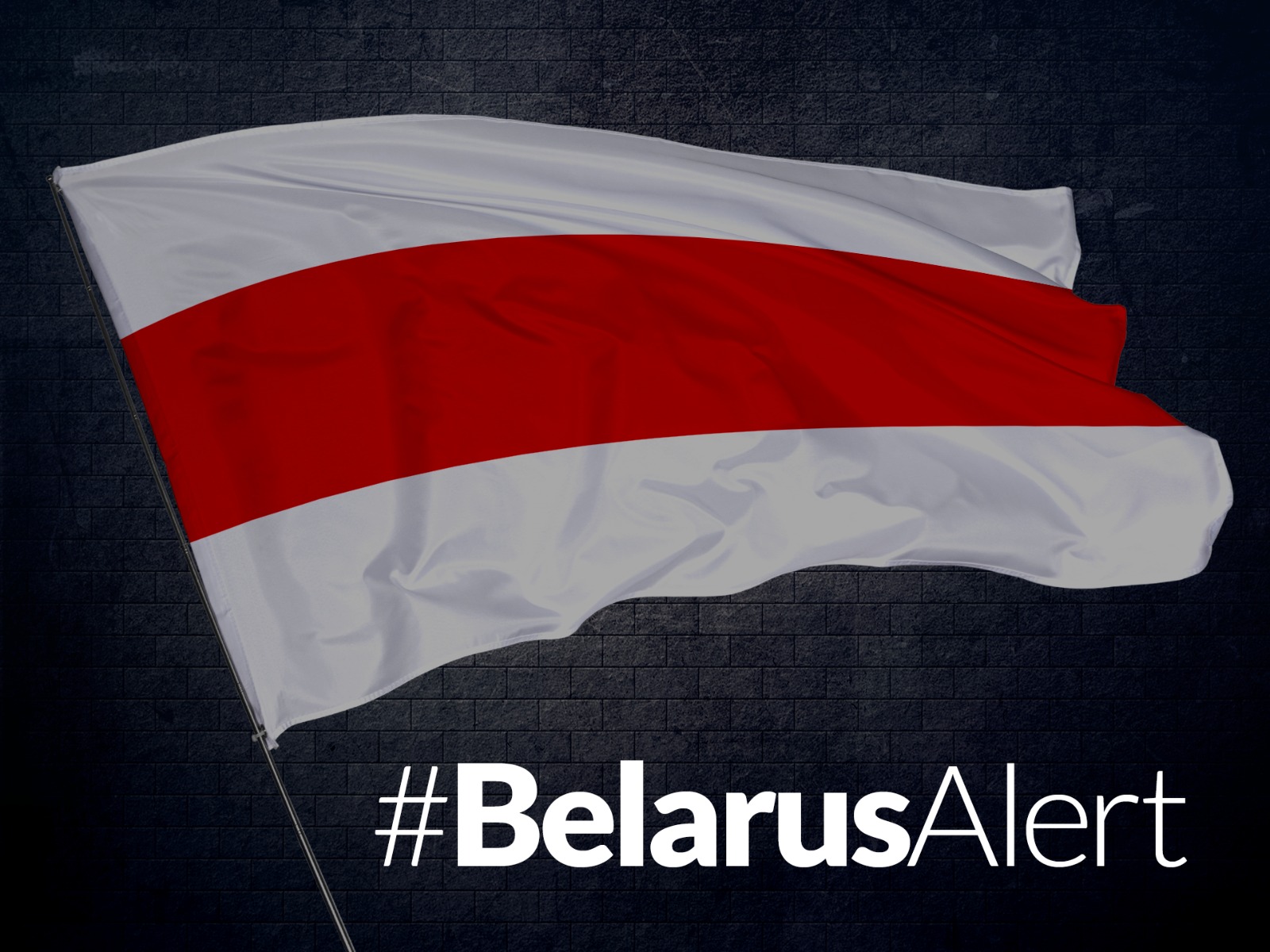
Underneath we present a collection of texts which constitute our dedicated analytical program #BelarusAlert, a project of the Warsaw Institute experts who for over 60 days, starting from August 24, 2020, followed the Belarusian protests, international reactions and the actions of the regime.
The concept of analytical material was created thanks to co-financing from the Civil Society Organisations Development Programme 2019.
Selected activities of our institution are supported in cooperation with The National Freedom Institute – Centre for Civil Society Development.
_________________________________
All texts published by the Warsaw Institute Foundation may be disseminated on the condition that their origin is credited. Images may not be used without permission.

